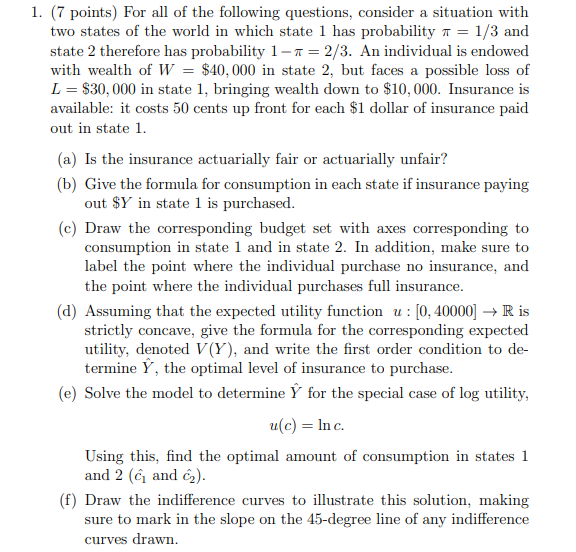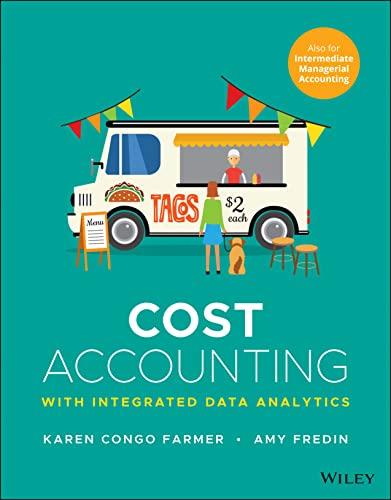
1. (7 points) For all of the following questions, consider a situation with two states of the world in which state 1 has probability a = 1/3 and state 2 therefore has probability 1-1 = 2/3. An individual is endowed with wealth of W = $40,000 in state 2, but faces a possible loss of L = $30,000 in state 1, bringing wealth down to $10,000. Insurance is available: it costs 50 cents up front for each $1 dollar of insurance paid out in state 1. (a) Is the insurance actuarially fair or actuarially unfair? (b) Give the formula for consumption in each state if insurance paying out $Y in state 1 is purchased. (c) Draw the corresponding budget set with axes corresponding to consumption in state 1 and in state 2. In addition, make sure to label the point where the individual purchase no insurance, and the point where the individual purchases full insurance. (d) Assuming that the expected utility function u : [0, 40000] R is strictly concave, give the formula for the corresponding expected utility, denoted V(Y), and write the first order condition to de- termine , the optimal level of insurance to purchase. (e) Solve the model to determine for the special case of log utility, u(c) = Inc. Using this, find the optimal amount of consumption in states 1 and 2 (6 and 2). (f) Draw the indifference curves to illustrate this solution, making sure to mark in the slope on the 45-degree line of any indifference curves drawn. 1. (7 points) For all of the following questions, consider a situation with two states of the world in which state 1 has probability a = 1/3 and state 2 therefore has probability 1-1 = 2/3. An individual is endowed with wealth of W = $40,000 in state 2, but faces a possible loss of L = $30,000 in state 1, bringing wealth down to $10,000. Insurance is available: it costs 50 cents up front for each $1 dollar of insurance paid out in state 1. (a) Is the insurance actuarially fair or actuarially unfair? (b) Give the formula for consumption in each state if insurance paying out $Y in state 1 is purchased. (c) Draw the corresponding budget set with axes corresponding to consumption in state 1 and in state 2. In addition, make sure to label the point where the individual purchase no insurance, and the point where the individual purchases full insurance. (d) Assuming that the expected utility function u : [0, 40000] R is strictly concave, give the formula for the corresponding expected utility, denoted V(Y), and write the first order condition to de- termine , the optimal level of insurance to purchase. (e) Solve the model to determine for the special case of log utility, u(c) = Inc. Using this, find the optimal amount of consumption in states 1 and 2 (6 and 2). (f) Draw the indifference curves to illustrate this solution, making sure to mark in the slope on the 45-degree line of any indifference curves drawn







